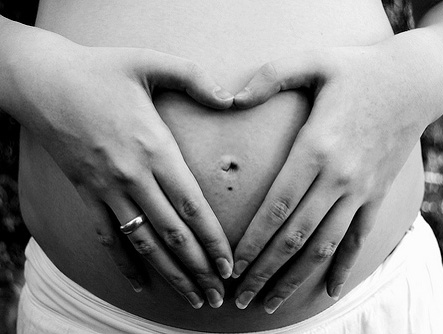
<a href="http://www.shutterstock.com/cat.mhtml?lang=en&search_source=search_form&version=llv1&anyorall=all&safesearch=1&searchterm=pregnant+doctor&search_group=&orient=&search_cat=&searchtermx=&photographer_name=&people_gender=&people_age=&people_ethnicity=&people_number=&commercial_ok=&color=&show_color_wheel=1#id=108496100&src=e1b17ee18ba770cc0fff89b76662ecf5-1-4">auremar</a>/Flickr
Pregnant women are told not to do lots of things. No booze! No sushi! No deli meat! No peanuts! Stop smoking! But doctors apparently aren’t warning them about more insidious substances that they encounter in their daily lives, according to a new study from researchers at the University of California-San Francisco.
Environmental Health News reported on the study on Monday:
Almost all of the doctors in the new, nationwide survey, conducted by University of California, San Francisco researchers, said they routinely discussed smoking, alcohol, diet and weight gain. Eighty-six percent also said they discuss workplace hazards, and 68 percent warn about second-hand smoke.
But only 19 percent said they talk to their pregnant patients about pesticides and only 12 percent discuss air pollution. Forty-four percent said they routinely discussed mercury with pregnant women. Eleven percent said they mention volatile organic compounds, which are fumes emitted by gasoline, paints and solvents.
Even fewer physicians warned their patients about two chemicals in consumer products that are often in the news: bisphenol A (BPA) at 8 percent and phthalates at 5 percent. Nine percent of the doctors told their patients about polychlorinated biphenyls (PCBs), industrial compounds often found in fish.
Pregnant women are exposed to dozens of harmful chemicals every day—mercury, bisphenol A, flame retardants, and pesticides. Exposure to toxic chemicals in the womb can have a “profound and lasting impact on health across the life course,” doctors have found.
Women already have a lot to deal with when pregnant, which is why some doctors say that they should be doing more to raise awareness about those potential hazards even before women become pregnant.











